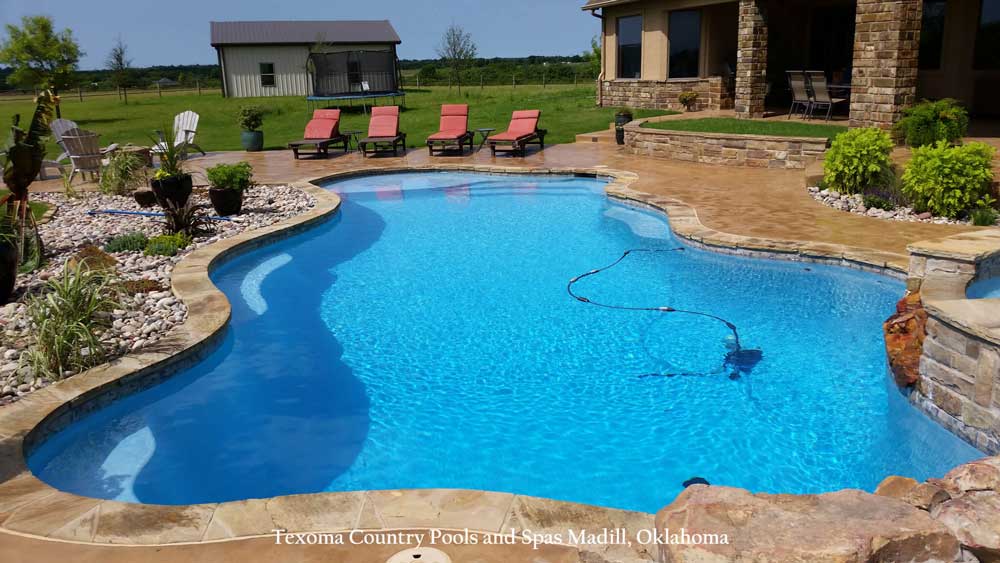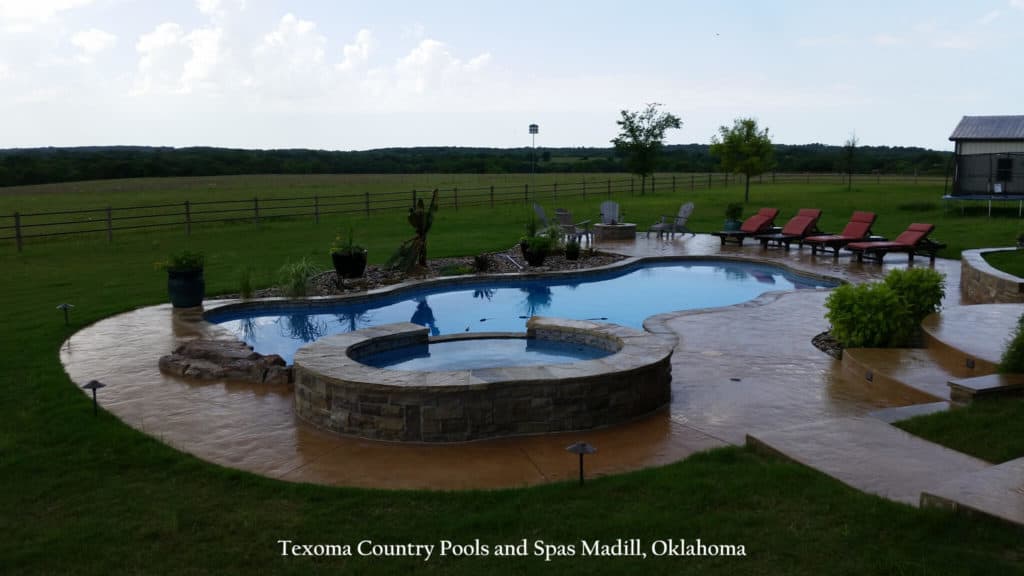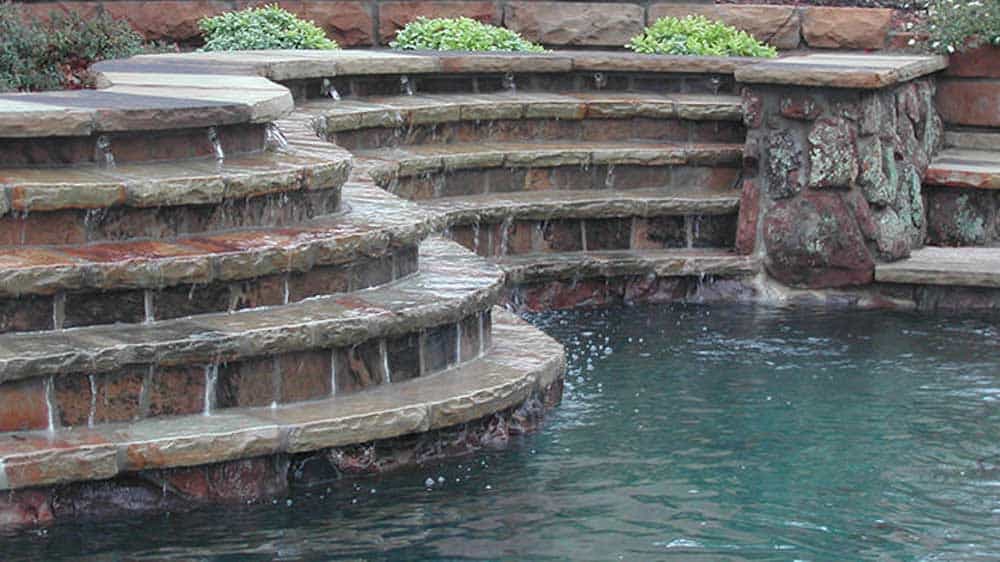According to the Association of Pool and Spa Professionals, there are about 5 million existing inground pools in the U.S., and 175,000 to 200,000 new pools are built each year. Let us help you crunch numbers for your dream backyard.
Things to consider when Building A Perfect Inground Pool.
WHAT ARE THE DIFFERENT TYPES OF POOLS?
There are three main types of inground pools: concrete, vinyl-lined, and fiberglass.
A fourth (steel- or aluminum walled) is built much less and not everywhere in the country.
Concrete aka gunite/shotcrete pools are custom-built and have no limitations.
In this process, concrete is shot from a gun onto steel-reinforced walls. Once cured, it has either plastered smooth, painted, finished with a textured aggregate surface or tiled.
Structural concrete, a different style of concrete is often used for pools built into hillsides.
Concrete pools can take between three to 12 weeks to complete however; the upside is it is the strongest, most durable type of pool.
Pools can last 50 years.
Another great thing about inground concrete pools is they can be remodeled, enlarged and updated.
Vinyl pools are preformed flexible liners that fit into the excavation and attach to a reinforced wall frame made of steel, aluminum or non-corrosive polymer.
Most vinyl pools have shape and size limitations, but there also are free-form liners.
The majority of vinyl pools are rectangular, but such shape as L-shaped and even custom are available. These liner designs come in many colors.
The true downside for vinyl pools comes from the ability of pool toys, pets and sharp objects puncturing the liner (they can be repaired).
The time of installation is much shorter than concrete pools to the tune of 1-3 weeks.
Fiberglass pools are factory-molded into one giant bowl-shaped piece, which is set into the excavated hole by a crane. Because these are prefabricated pools, they can often be installed in as few as three days.
Although the upside is the smooth finish, which naturally retards algae, the downside is that they come in fewer sizes and shapes than concrete or vinyl pools.
The mold is shipped via truck, which can delay delivery depending upon which state the delivery route passes through, as these oversized loads are regulated at the state level.
Upon arrival, a crane typically accompanies fiberglass pools in order to get them in the backyard.
COMPARING THE PRICES OF SWIMMING POOLS
It’s difficult to say how much you’ll pay for an inground pool.
Cost varies widely depending on the region of the country; type of pool, soil condition, circulation system, accessories and, of course, the size and shape of the pool.
Even the time of year can influence the price; some contractors offer discounts for pools built during the off-season when business is slow.
Concrete pools are the most expensive, followed closely by vinyl-lined pools, and then fiberglass.
For reference, a 20- x 40-ft. concrete pool with a filtration system, initial water fill-up, underwater lights and stone coping around the pool’s edge could cost upward of $35,000.
The sky’s the limit with modifications and features from fencing, landscaping to all other pool-related options.
SWIMMING POOL ZONING
Inground swimming pools are subject to building and zoning regulations just like any other home-improvement project.
Therefore, you must apply for a building permit and receive approval before any work can begin.
Building and zoning rules differ from town to town, but ordinarily, you must satisfy certain setback distances from the pool to property lines, septic tanks, wells, sewer lines, wetlands and the like.
There are also codes concerning pool barriers and gate hardware.
Building A Perfect Inground Pool Continued…
HOW DO YOU CHOOSE WHERE TO PUT A POOL?
Picking the proper spot for your inground pool is important. Our team, can provide valuable insight, but be sure to consider the following pool-placement tips:
Swimming pools & sunshine: Reduce your electricity bill and cash in on the sun! Also, solar energy trumps paid-for energy any day. Stay away from trees.
Block that breeze: Wind increases water evaporation, which can cost you more for water replacement. No one likes a huge gust when they’re wet.
Create a windbreak or use a natural one i.e. fencing, shrubs, and trees.
Seek higher ground: Avoid the low-lying area, which could result in flooding, pooling, and all kinds of chaos when the rain is coming down. Avoid areas with a high water table; rising groundwater will flood the deep end of the excavated hole.
What’s above & below the swimming pool matters: Don’t put your pool under overhead telephone or electrical wires, or directly over buried sewer lines, septic systems or electrical cables.
Build your swimming pool within eyesight: Always give yourself a chance to keep your eye on swimmers. Nothing like an additional safety mechanism.
Consider what you might add in the future: Pool placement can inhibit future expansions.
Give room for outdoor decking, spas, kitchens, fire pits, pergolas, benches, seating, and all other activities that you plan on adding.
Building A Perfect Inground Pool takes more than just the pool.
CHOOSE A POOL CIRCULATION SYSTEM
The pool’s circulation system is designed to keep the water clean and clear. To do this effectively, it uses both filtration and sanitization. The heart of the filtration system is the pump.
This draws water from the pool’s bottom drains, sends the surface water through an automatic skimmer, and then passes everything through a filter before circulating it to the pool.
There are three types of filters commonly used: sand, cartridge and diatomaceous earth (DE).
WHAT ARE SWIMMING POOL ADDITIONS?
If you decide to enhance the landscape, buy accessories, invest in pool maintenance, or to compete with the Joneses, here is how you will do it.
A pool area can come with all or very few of the following additions:
- outdoor lighting
- landscaping
- pathways
- decks
- fencing
- patios
- privacy screens
- whirlpool spas
- outdoor sound system
- water test kits
- shade structure
- patio furniture
- equipment shed
- storage cabinet
- pool toys
- additional outdoor electrical outlets and telephone line






When Building A Perfect Inground Pool call us (903) 891-3483

















